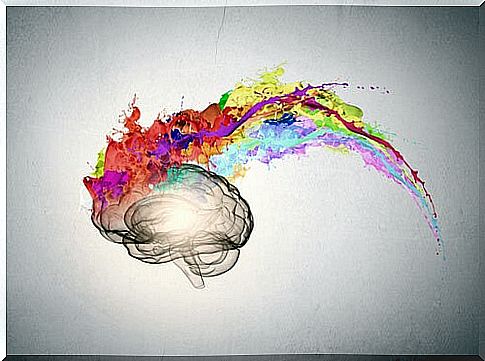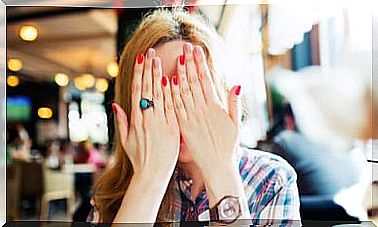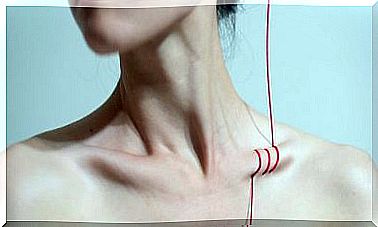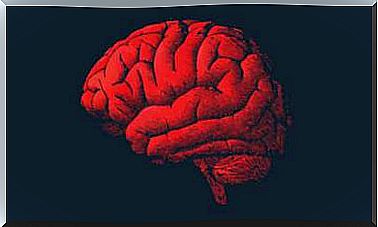Mirror-touch Synesthesia, A Way Of Connecting With Others

Every day we are in contact with others, with ourselves and with nature, but … do we connect in a deep way? Many times doing it is not an easy task; however, we could say that, in a certain way, for people with mirror-touch synesthesia it is.
In this article, we’ll explore this unmatched form of connection. To begin we will know what synesthesia is, later we will delve into the characteristics of mirror-touch synesthesia and finally we will see how this phenomenon can be measured.

Synesthesia, what is it?
Can you imagine the music of any color? Can you imagine getting to differentiate flavors depending on the words? People with synesthesia get to do it. According to the Royal Spanish Academy of Language, it is a “subjective image or sensation of one sense, determined by another sensation that affects a different sense.”
In other words, synesthesia consists of a kind of sensory alteration. In it, a stimulus of one sense generates typical sensations of another sense. Although the phenomenon may seem strange, this way of feeling is not pathological nor does it obey any medical condition.
There are different forms of synesthesia, let’s see some of them:
- Grapheme-color synesthesia. It consists of being able to associate the letters with colors. For example, “a” can be associated with red, “b” with yellow, “c” with green, and so on.
- Sound-color synesthesia. It is the ability to hear a sound and assign a color to it.
- Lexical-gustatory synesthesia. It is a form of synesthesia in which people associate words with taste. In other words, they associate the words with the flavors.
- Synesthesia of personification. When people are able to perceive the personality of letters and numbers.
The field of synesthesia is a field that is increasingly being investigated in greater depth; Therefore, there are recent discoveries of synaesthesia, for example, mirror-touch synesthesia, discovered in 2005.
Characteristics of mirror-touch synesthesia
Also, it is called mirror-touch synesthesia. It consists of the experimentation of tactile sensations after observing that other people are touched. It seems incredible, right? Let’s see the main characteristics of this curious type of synesthesia:
- Activation of the somatosensory cortex generating the sensation that the person is being touched.
- As if it were in the body itself : it is the sensation experienced by people with mirror-touch synesthesia.
- Consciousness: a condition for recognizing that it is a mirror-touch synesthesia is that it be a conscious experience.
- A different stimulus than usual is the one that induces the response.
- Automaticity: l as experiences occur without being previously thought.
Now, the theories about the cause of this type of synesthesia are many. The main three are:
- Sensory mirror. This is a theory that suggests that people have mirror-touch synesthesia when activations of the somatosensory mirror system occur below the normal threshold.
- Theory of the visual and somatosensory system. This theory suggests that people with mirror-touch synesthesia have the visual and somatosensory system directly connected.
- Bimodal cell theory. It suggests that there are bimodal cells that, when observing touch, are activated for both tactile and visual stimuli.
Also, mirror neurons are studied, which seem to be more in people with mirror touch synesthesia. Therefore, in non-synaesthetic people they would activate only imitative responses, while people with this type of synesthesia experience them as if they were real.
On the other hand, mirror-touch synesthesia has been associated with empathy. It seems that people with this type of synesthesia have greater activation in the mirror systems, which causes them to develop a higher level of empathy.

Can mirror touch synesthesia be measured?
Various researches have made an effort to measure this synesthesia through different methods to better understand it. For example, through resonance and thermography. Thanks to these researchers, we have a deeper understanding of how mirror-touch synesthesia works.
Blakemore, Bristow, Bird, Frith and Ward, in their article “Somatosensory activations during the observation of touch and a case of vision-touch synaesthesia” published in the Journal of Brain Neurology , show the experiment they designed. It consisted of investigating the neural system involved in the perception of touch through magnetic resonance imaging.
It was performed in 12 people without synesthesia and in “C”, a woman with mirror-touch synesthesia. They analyzed neuronal activity, to observe the touch of the human face or neck, in order to investigate the somatosensory typography in both cases.
As a result, they obtained that the activation patterns of “C” differed from the control people (not synaesthetic) in three ways:
- Activations in the somatosensory cortex were significantly higher.
- The left premotor area in “C” was activated to a greater extent than in non-synaesthetic people.
- The insula cortex was activated in “C”, but not in people without synesthesia.
Through these measurements they were able to demonstrate that “C” has a mirror system for touch that is above the threshold for conscious tactile perception.
On the other hand, in her doctoral thesis Elvira Salazar decided to analyze whether the observation of painful and tactile stimuli generate a body asymmetry in the observer’s thermogram. That is, by applying a technique that allows the temperature to be recorded graphically, called thermography, they decided to observe the asymmetry.
Why? In normal situations there should be symmetry unless there is a pathology and they wanted to know if by not having it and observing situations of pain and touch, there could be asymmetry in the thermography.
Thus, they found an objective measure, thermal asymmetry, to study the physiological manifestations of mirror-touch synesthesia beyond patterns of brain activity, subjective experience, and behavioral markers.
The tactile sensation after observing is so profound in people with mirror-touch synesthesia that those who possess it are said to be more empathetic. An awesome way to connect with others! Now, we hope that various studies will continue to bring us closer to this and other synesthesia to learn more about this amazing phenomenon.









